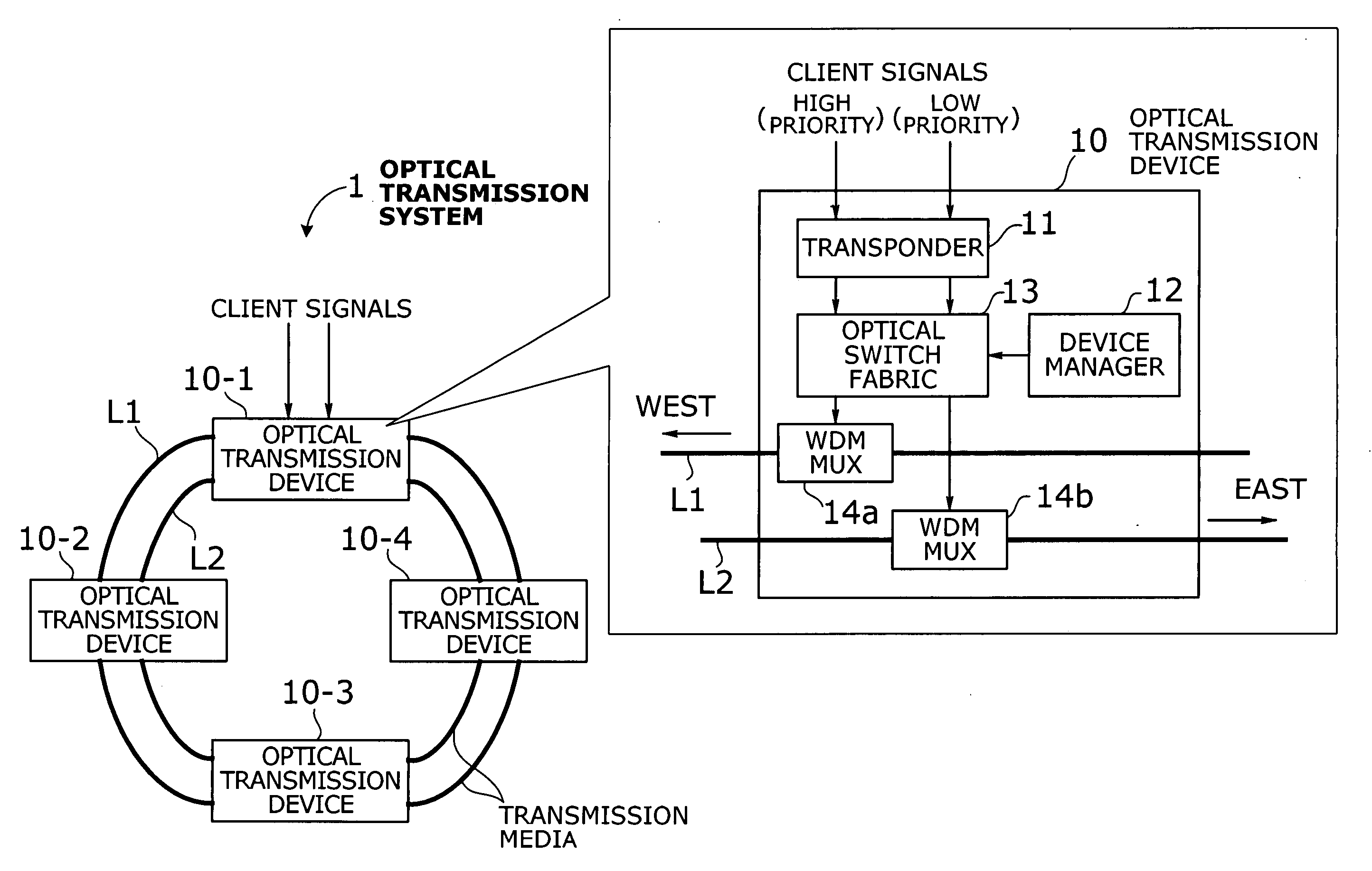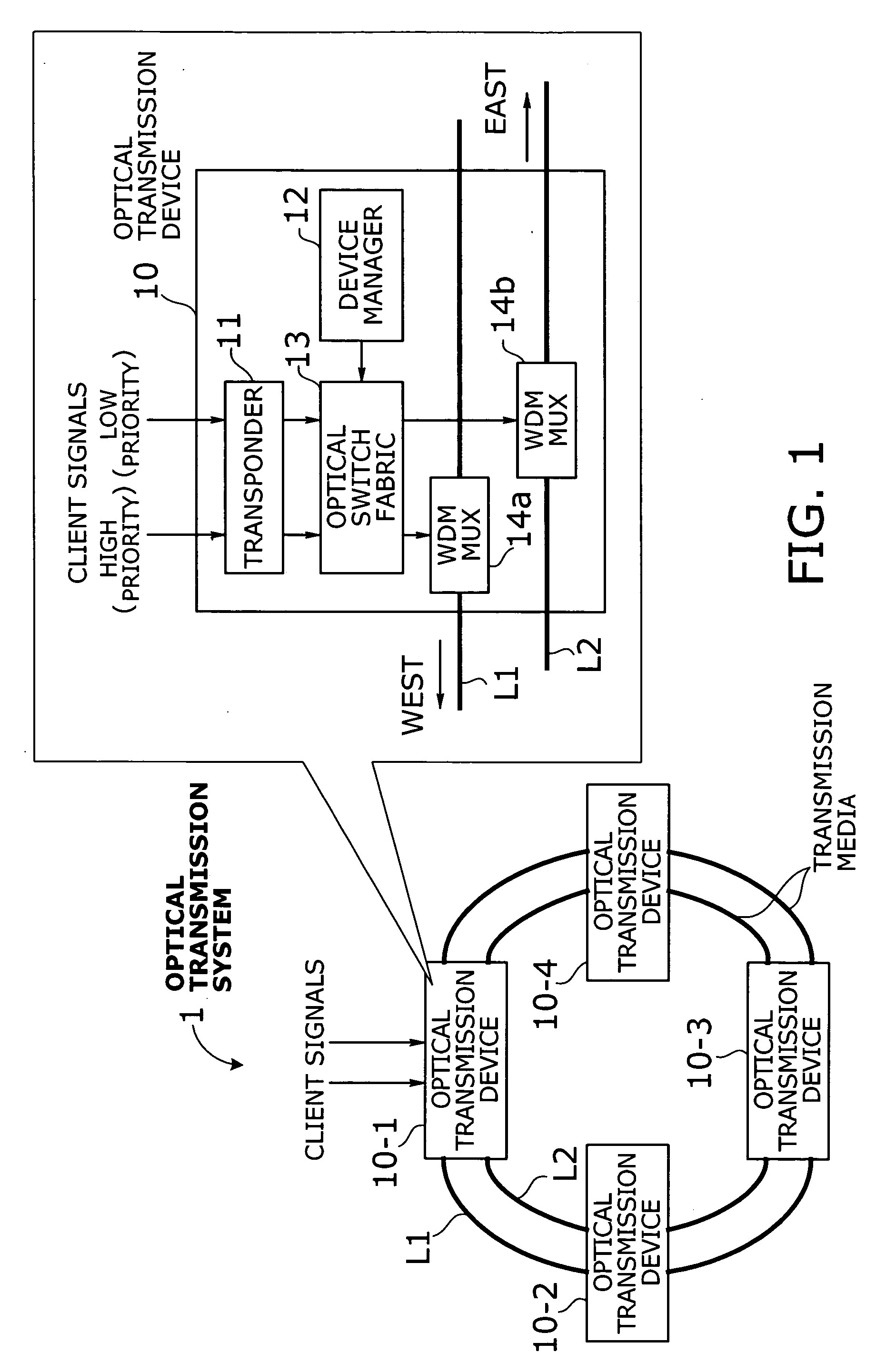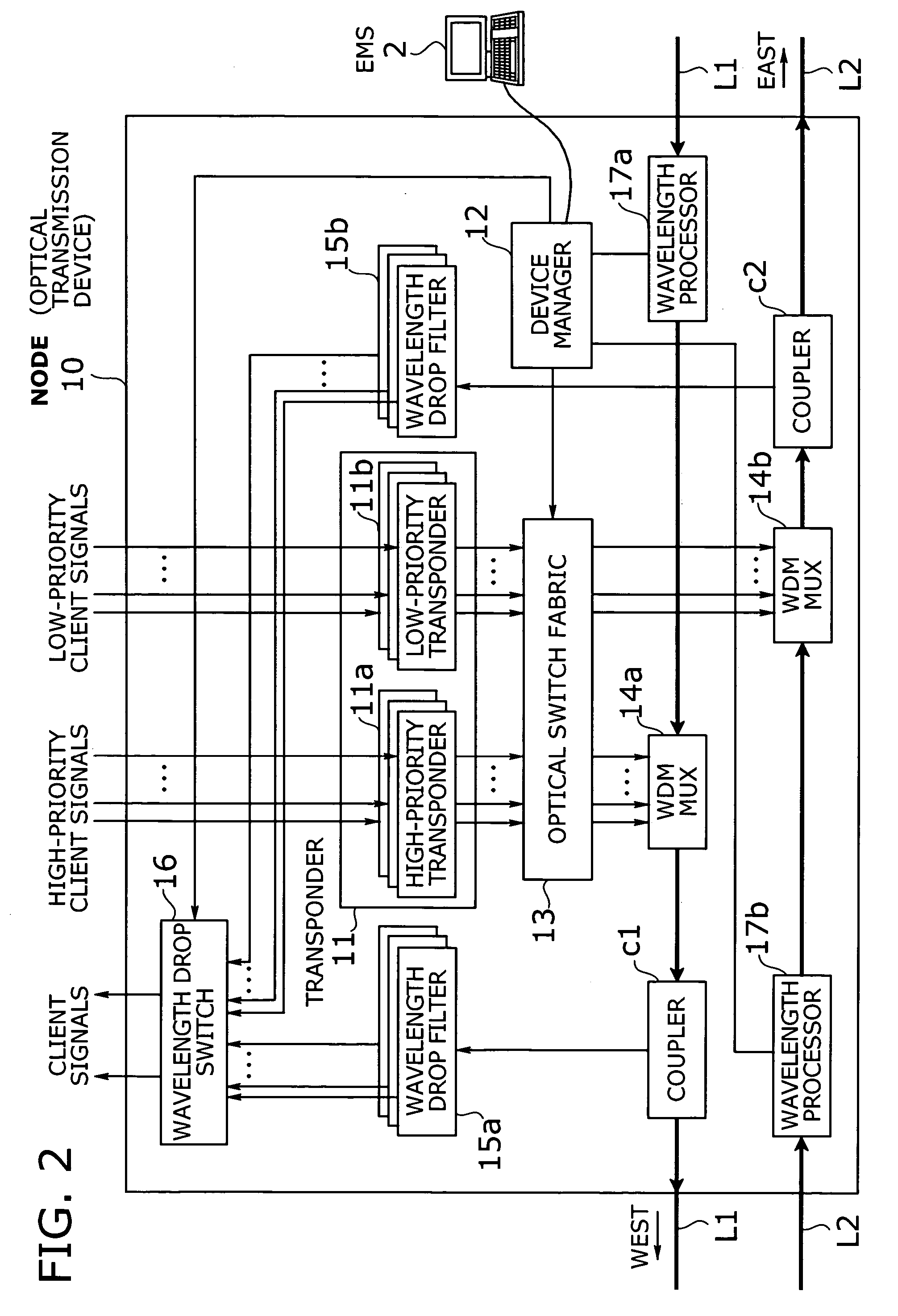Optical transmission system with two-mode ring protection mechanism for prioritized client signals
a protection mechanism and transmission system technology, applied in the field of optical transmission systems, can solve the problems of device, lack of consideration for bandwidth usage in normal situations, and failure to efficiently use the full available network capacity, so as to achieve enhanced fault tolerance, more efficient bandwidth usage, and higher service availability
- Summary
- Abstract
- Description
- Claims
- Application Information
AI Technical Summary
Benefits of technology
Problems solved by technology
Method used
Image
Examples
Embodiment Construction
[0026] Preferred embodiments of the present invention will be described below with reference to the accompanying drawings, wherein like reference numerals refer to like elements throughout.
[0027]FIG. 1 is a conceptual view of an optical transmission system according to an embodiment of the present invention. The illustrated optical transmission system 1 is a WDM ring network involving a chain of four nodes 10-1 to 10-4 (collectively referred to by the reference numeral “10”) connected in a dual ring topology by two fiber-optic transmission lines (“lines” for short) L1 and L2. Each optical transmission device 10 contains a transponder 11, a device manager 12, an optical switch fabric 13, and WDM multiplexers 14a and 14b. Their functions are described below.
[0028] The transponder 11 converts incoming client signals into WDM signals to be added to the network traffic on the ring. The client signals are classified into those with a high priority and those with a low priority in terms ...
PUM
 Login to View More
Login to View More Abstract
Description
Claims
Application Information
 Login to View More
Login to View More - R&D
- Intellectual Property
- Life Sciences
- Materials
- Tech Scout
- Unparalleled Data Quality
- Higher Quality Content
- 60% Fewer Hallucinations
Browse by: Latest US Patents, China's latest patents, Technical Efficacy Thesaurus, Application Domain, Technology Topic, Popular Technical Reports.
© 2025 PatSnap. All rights reserved.Legal|Privacy policy|Modern Slavery Act Transparency Statement|Sitemap|About US| Contact US: help@patsnap.com



